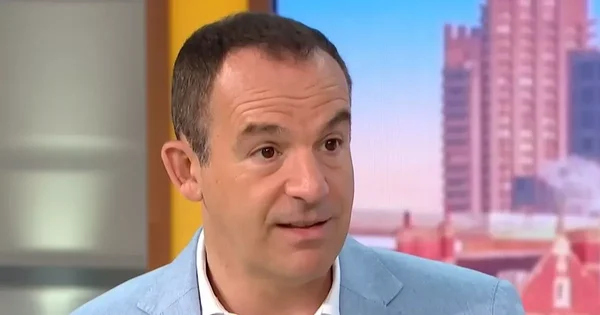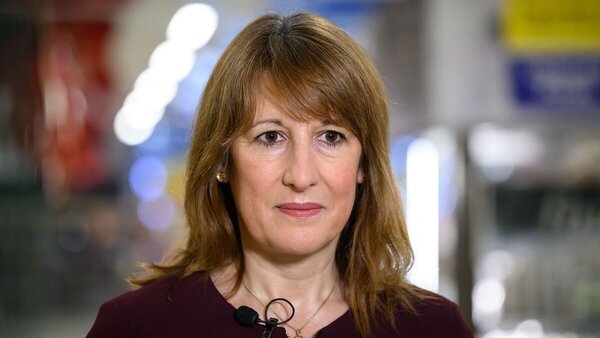Critical Illness Cover vs Income Protection: What Self-Employed People Need to Know
Trying to choose between critical illness cover and income protection feels a bit like buying insurance in a foreign language - you know you need something, but the options seem deliberately confusing.
Both types of cover protect your income when health problems strike, but they work in fundamentally different ways. Choose wrong, and you might pay premiums for years only to discover your policy won’t actually help when you need it.
I’ve helped dozens of self-employed clients untangle this confusion, often finding they’ve bought the wrong type of cover for their situation. Let me break down exactly what each does, when they pay out, and how to choose the right protection for your personal circumstances.
Critical Illness Cover: What It Actually Does
Critical illness insurance cover pays a single lump sum payout if you’re diagnosed with a specific serious illness covered (illness covered) in your critical illness policy. It’s diagnosis-based insurance policy, not income replacement insurance.
Think of it as a financial cushion for catastrophic health events. You get diagnosed with cancer, have a heart attack, suffer a stroke, or are diagnosed with another illness covered, and the insurance policy pays you a predetermined lump sum payout (typically £25,000-£150,000+) as a one-off, tax free payment, provided you make a valid claim and a successful claim is approved.
How a critical illness policy works:
- One-time lump sum payout on diagnosis (tax free)
- Specific list of illness covered in the policy (such as cancer, heart attack, stroke; some policies also cover total permanent disability)
- No ongoing payments just the single payout
- Payment regardless of whether you can continue working
- Amount chosen when taking out the insurance policy
The lump sum payout can be used for private treatment, medical expenses, home modifications, or any other costs you face during recovery.
The lump sum approach makes critical illness insurance cover fundamentally different from income protection. You might receive £50,000 immediately, which sounds great until you realise you can’t work for two years and have no ongoing income support.
Critical illness insurance was originally designed to pay off mortgages or cover medical expenses during serious illness. For self-employed people, it’s often used to cover immediate costs and business wind-down expenses when serious illness ends your ability to work. It is especially important for those with shared financial commitments, such as families or partners with joint responsibilities.
You can buy a critical illness policy on its own or as part of a combined life insurance policy. Most combined life and critical illness insurance products (most combined life) only allow one claim either for a critical illness or death after which the policy ends. These insurance policies generally have no cash value, so if you don’t make a claim, you won’t get any money back.

Income Protection: How It Differs Fundamentally
Income protection insurance pays regular monthly income protection payments that replace a percentage of your income while you’re unable to work due to ill health or if you fall ill or are injured. This income protection cover is designed to provide financial support and financial protection by replicating your salary during periods of illness or injury, helping you meet your living expenses.
Unlike critical illness cover’s one-off payment, income protection offers ongoing regular monthly income that continues until you recover or reach the policy’s maximum benefit period, ensuring steady financial support.
How an income protection policy works:
- Income protection payments are typically 50-70% of your pre-illness income, paid as regular monthly income
- Continues throughout the incapacity period (subject to policy terms)
- Income protection cover includes a wide range of illnesses and injuries, not just specific conditions, providing broader financial protection
- Payments usually start after a waiting period (deferred period of 4-52 weeks)
- Can continue for years if you remain unable to work
The monthly payment structure makes income protection insurance more like self-employed sick pay you receive regular income protection payments covering your ongoing living expenses while you can’t earn. In addition to financial support, many insurance companies also provide support services such as rehabilitation, physiotherapy, or mental health counselling to help you recover and return to work.
For a self-employed person earning £3,000 monthly, an income protection policy might pay £1,800 2,100 monthly until recovery. Critical illness cover might pay £75,000 once, leaving you to manage monthly expenses from that lump sum. Income protection insurance complements statutory sick pay and any employer offers sick pay, providing additional financial protection if those sources are insufficient.
Conditions Covered: Critical Illness vs Income Protection
The biggest difference is what conditions trigger payments. When comparing protection and critical illness, critical illness insurance has a specific list of serious conditions, while income protection covers basically anything that stops you working.
Critical illness typical coverage:
- Cancer (excluding less serious cases)
- Heart attack
- Stroke
- Major organ transplant
- Kidney failure
- Multiple sclerosis
- Parkinson’s disease
- Paralysis
- Coronary artery bypass surgery
The list varies by policy but typically includes 40-50 specific serious conditions. Anything not on the list doesn’t pay out, regardless of how seriously it affects you. Also, previous health issues may affect your eligibility for critical illness cover, as pre-existing conditions are often excluded or may impact the payout conditions.
Income protection typical coverage:
- Any illness preventing work (flu, pneumonia, chronic conditions)
- Injuries from accidents
- Mental health conditions (depression, anxiety, stress)
- Back problems and musculoskeletal issues
- Ongoing medical conditions affecting work capacity
- Complications from surgery or medical treatment
Income protection cares whether you can work, not what specific diagnosis you have. A back injury preventing a builder from working gets covered even though it’s not on any critical illness list. Previous health issues can also affect income protection eligibility, with some exclusions or limitations based on your medical history.

When Each Type of Insurance Actually Pays Out
Understanding payout triggers is crucial because this determines whether policies help you in real-life situations. Many people discover their policy won’t pay for conditions they assumed were covered.
Critical illness payout requirements:
- To make a critical illness claim, the diagnosis must exactly match the policy definition
- Severity usually must meet minimum criteria
- Survival periods sometimes required (e.g., 14-28 days)
- Medical evidence confirming diagnosis needed for a critical illness claim
- Some conditions have specific procedure requirements
Critical illness policies define conditions precisely. “Cancer” doesn’t mean all cancers - they specify which types and stages qualify. Early-stage cancers often don’t meet criteria, frustrating people who thought “cancer” meant any cancer.
Income protection payout requirements:
- Medical evidence proving you can’t work
- Meeting policy’s definition of incapacity
- Being under active medical treatment
- Regular medical updates during claims
- Usually no requirement to have specific diagnosis
Income protection focuses on functional capacity rather than specific diagnoses. You don’t need a particular diagnosis; you need medical evidence that you genuinely can’t do your job.
Cost Comparison: Which Is More Expensive?
Premium costs for critical illness and income protection vary based on multiple factors, but generally income protection costs significantly more for equivalent coverage value.
Typical cost examples (approximate):
Critical illness cover:
- 35 year-old non-smoker, £75,000 cover, 25-year term: £25 45 monthly
- 45-year-old non-smoker, £100,000 cover, 20-year term: £70-110 monthly
Income protection:
- 35-year-old, £2,000 monthly benefit, 4 week deferred period: £40-80 monthly
- 45 year-old, £2,500 monthly benefit, 13-week deferred period: £90 160 monthly
These costs vary enormously based on occupation, health, smoking status, and specific policy terms. Manual workers pay substantially more than desk-based workers.
Income protection seems more expensive until you consider that a single year of payments at £2,000 monthly equals £24,000 - nearly the entire critical illness cover amount. For long-term incapacity, income protection provides far greater total value.
For detailed guidance on managing your self-employed finances alongside protection planning, our comprehensive guide covers essential financial management strategies.

Which Situations Favour Critical Illness Cover
Critical illness cover makes most sense in specific circumstances where lump sum payments provide better protection than ongoing income replacement.
When critical illness cover works well:
- You have large lump-sum liabilities (mortgage, business loans)
- You want to pay off debts if serious illness strikes
- Your business could be sold if you can't continue
- Family would need substantial immediate funds
- You can't afford income protection premiums
The lump sum nature particularly suits people with mortgages. A £150,000 critical illness payout could clear your mortgage entirely, removing your largest monthly expense and providing security regardless of future income.
Business owners with valuable businesses that could be sold also benefit from critical illness cover. The lump sum provides capital while winding up or selling the business after diagnosis.
Young, healthy self-employed people often choose critical illness cover because premiums are relatively affordable, providing substantial coverage even on tight budgets.
Which Situations Favour Income Protection
Income protection provides better value in situations where ongoing income replacement matters more than one-off capital payments.
When income protection works well:
- You have ongoing financial commitments (rent, dependents, etc.)
- You lack substantial savings for extended illness
- Your business has minimal sale value
- You're likely to eventually return to work after illness
- You worry about various health issues, not just catastrophic illness
The monthly payment structure directly replaces lost self-employed income, maintaining your standard of living throughout incapacity. This matters most for people with dependents relying on their ongoing income.
Income protection also covers far more situations than critical illness. You're much more likely to claim on income protection for back problems, mental health issues, or accidents than to get diagnosed with conditions on critical illness lists.
Statistically, you're more likely to be off work long-term from common conditions (back problems, stress, accidents) than to be diagnosed with critical illnesses. Income protection addresses more probable risks.

Can You Have Both? Should You?
You can definitely hold both critical illness and income protection policies simultaneously, and some situations justify the combined cost of both. This is often referred to as having 'income protection and critical' cover, providing a more comprehensive safety net.
Combined coverage makes sense when:
- You can afford both premium costs comfortably
- You have large debts plus ongoing expenses to cover
- You want comprehensive income protection and critical illness protection against all health risks
- Your occupation or health makes income protection expensive
- You’re approaching peak earning years with maximum financial commitments
The policies complement each other critical illness provides immediate capital, while income protection covers ongoing income. Together, income protection and critical illness cover provide comprehensive protection against both catastrophic illness and ordinary inability to work.
However, most self-employed people struggle to afford even one policy. In limited budget situations, income protection typically provides better value because it covers more scenarios and provides ongoing support.
Some insurers offer “income protection with critical illness accelerator” essentially income protection that pays out an accelerated lump sum on critical illness diagnosis. These hybrid policies can be cost-effective ways to get elements of both.
Common Exclusions and Limitations in Both Types
Both policy types have exclusions and limitations that affect when they actually pay out. Understanding these prevents nasty surprises during claims.
Critical illness common exclusions:
- Pre-existing conditions before policy start
- Self-inflicted conditions
- Alcohol or drug-related conditions
- Specific cancer stages or types
- Conditions not meeting severity definitions
Income protection common exclusions:
- Pre-existing conditions (often for first 2 years)
- Mental health conditions (sometimes limited or excluded initially)
- Normal pregnancy (though complications may be covered)
- Self-inflicted injuries
- Injuries from criminal activity
The pre-existing condition exclusions particularly affect people with medical history. Conditions you've had before might never be covered, even if you pay premiums for decades.
Mental health coverage has improved significantly in recent years, but limitations remain. Many income protection policies won't cover stress-related absence in the first 12-24 months, or limit mental health claims to 1-2 years total.

Making the Decision: Factors to Consider
Choosing between critical illness and income protection requires honest assessment of your specific circumstances, risks, and budget constraints.
Key decision factors:
- Your occupation's injury/illness risks
- Financial dependents relying on your income
- Debt levels and types (mortgage vs credit cards)
- Savings and emergency fund levels
- Budget available for premiums
- Age and current health status
- Family medical history
Manual workers with injury risks generally benefit more from income protection because accidents and musculoskeletal problems are more probable than critical illness. Desk-based workers might prefer critical illness cover as they're less likely to be unable to work from ordinary illness.
People with dependents should prioritise income protection because ongoing income matters more than lump sums for supporting families long-term.
Those with large mortgages might value critical illness cover's ability to pay off debt completely, removing the biggest ongoing expense if serious illness strikes.
Policy Features That Matter Most
Beyond the basic coverage type, specific policy features significantly affect whether insurance actually helps when you need it.
Critical illness features to prioritise:
- Comprehensive condition list (50+ conditions)
- Clear, reasonable definitions of covered conditions
- Lower severity thresholds where possible
- Additional payment on diagnosis (not just survival)
- Partial payment options for less severe manifestations
Income protection features to prioritise:
- Own occupation definition of incapacity
- Benefit period to retirement age (not just 2-5 years)
- Reasonable deferred period matching your savings
- Rehabilitation and back-to-work support
- Index-linking to maintain value against inflation
The definition of incapacity in income protection is absolutely critical. "Own occupation" means unable to do your specific work; "any occupation" means unable to do any work at all. The difference dramatically affects claim success rates.

Final Thoughts
Critical illness and income protection serve different purposes, and the right choice depends entirely on your specific circumstances, risks, and budget. There's no universally correct answer.
For most self-employed people, income protection provides better value because it covers more scenarios and provides ongoing income replacement. However, critical illness cover has specific advantages for people with large debts or limited budgets.
The worst option is having no protection at all because you couldn't decide between them. Even imperfect coverage beats nothing when health problems strike. Managing these protection decisions alongside your business finances doesn't have to be overwhelming - our free self-assessment app helps you track your financial position and plan for all scenarios, including periods when illness might affect your work.











